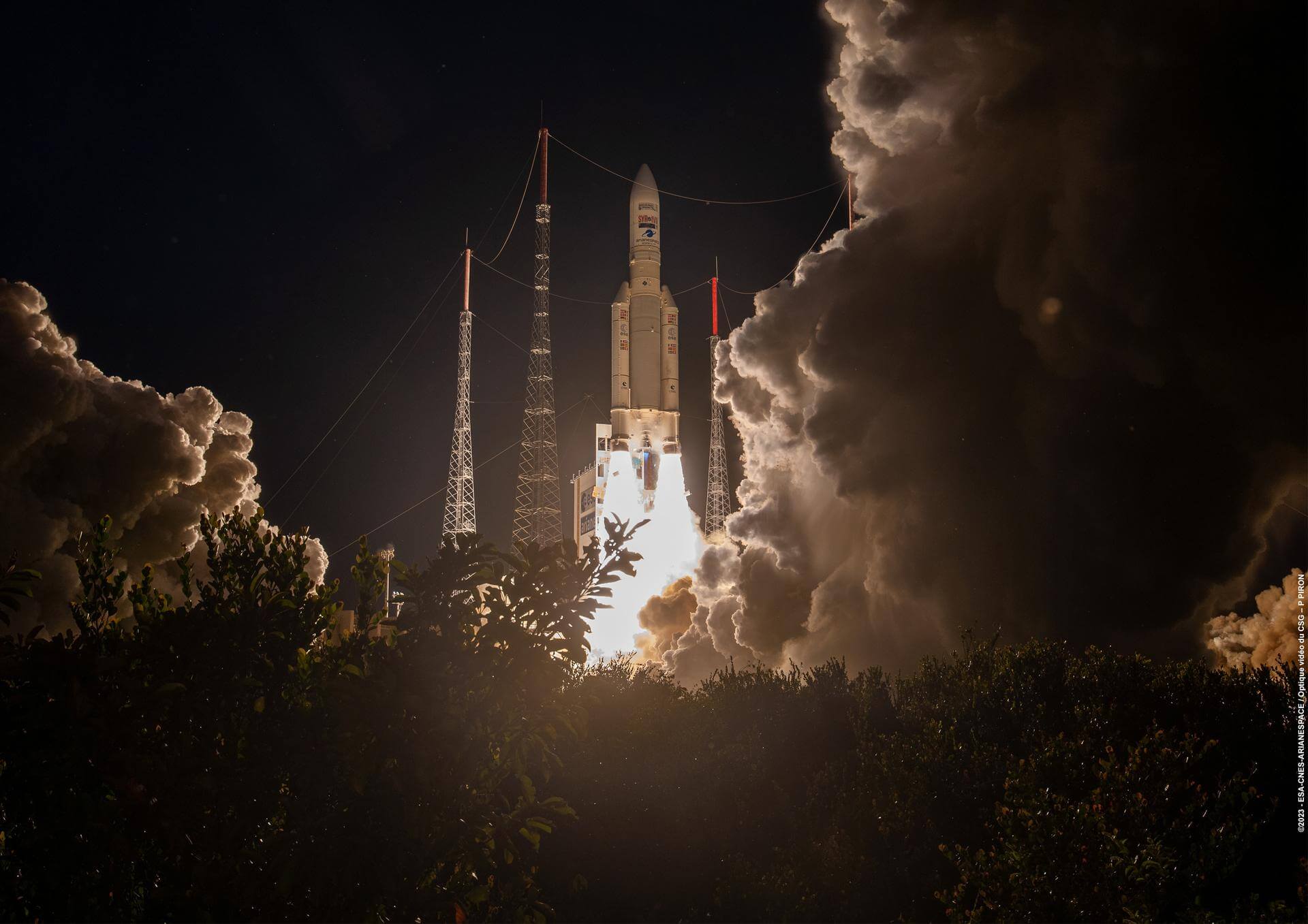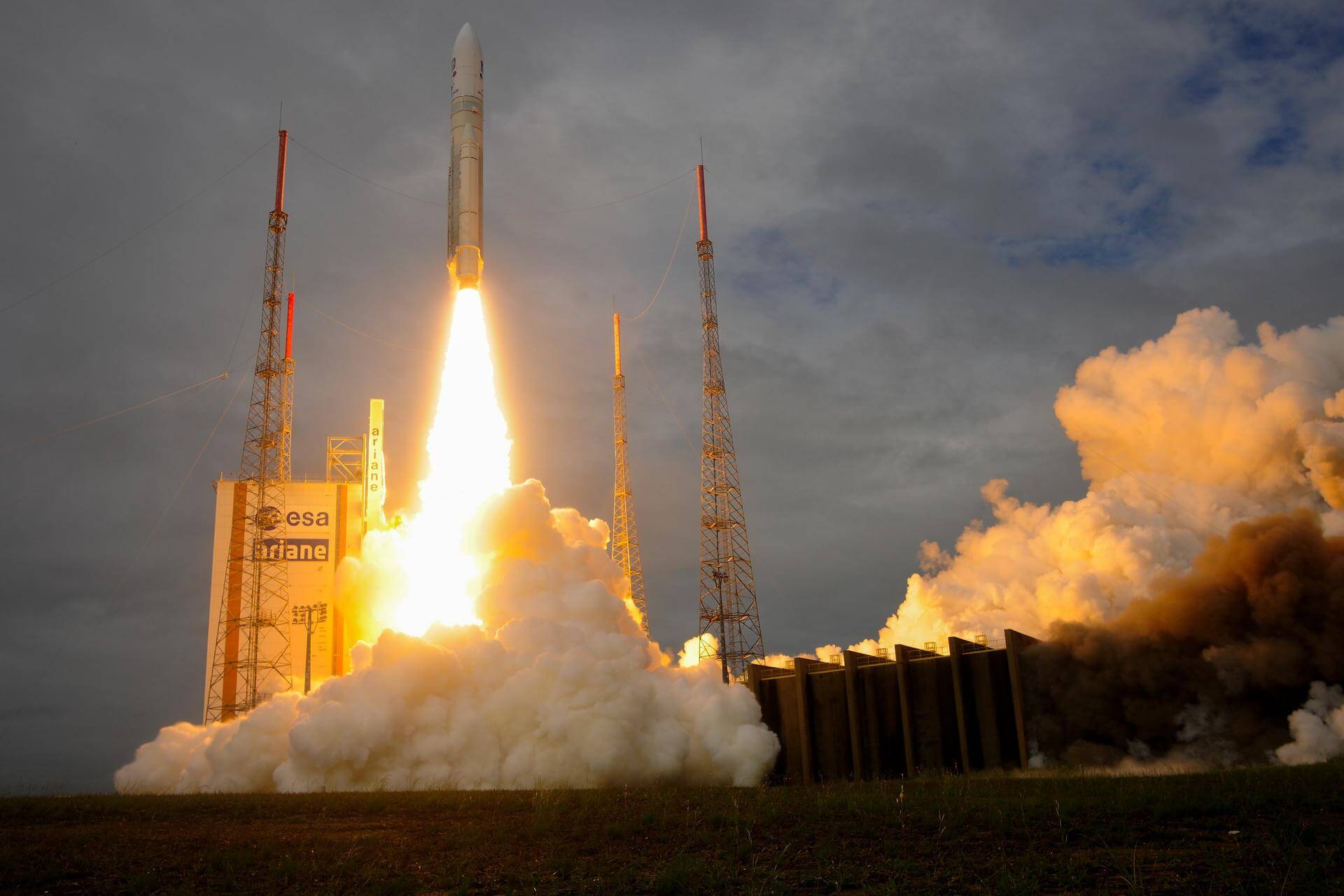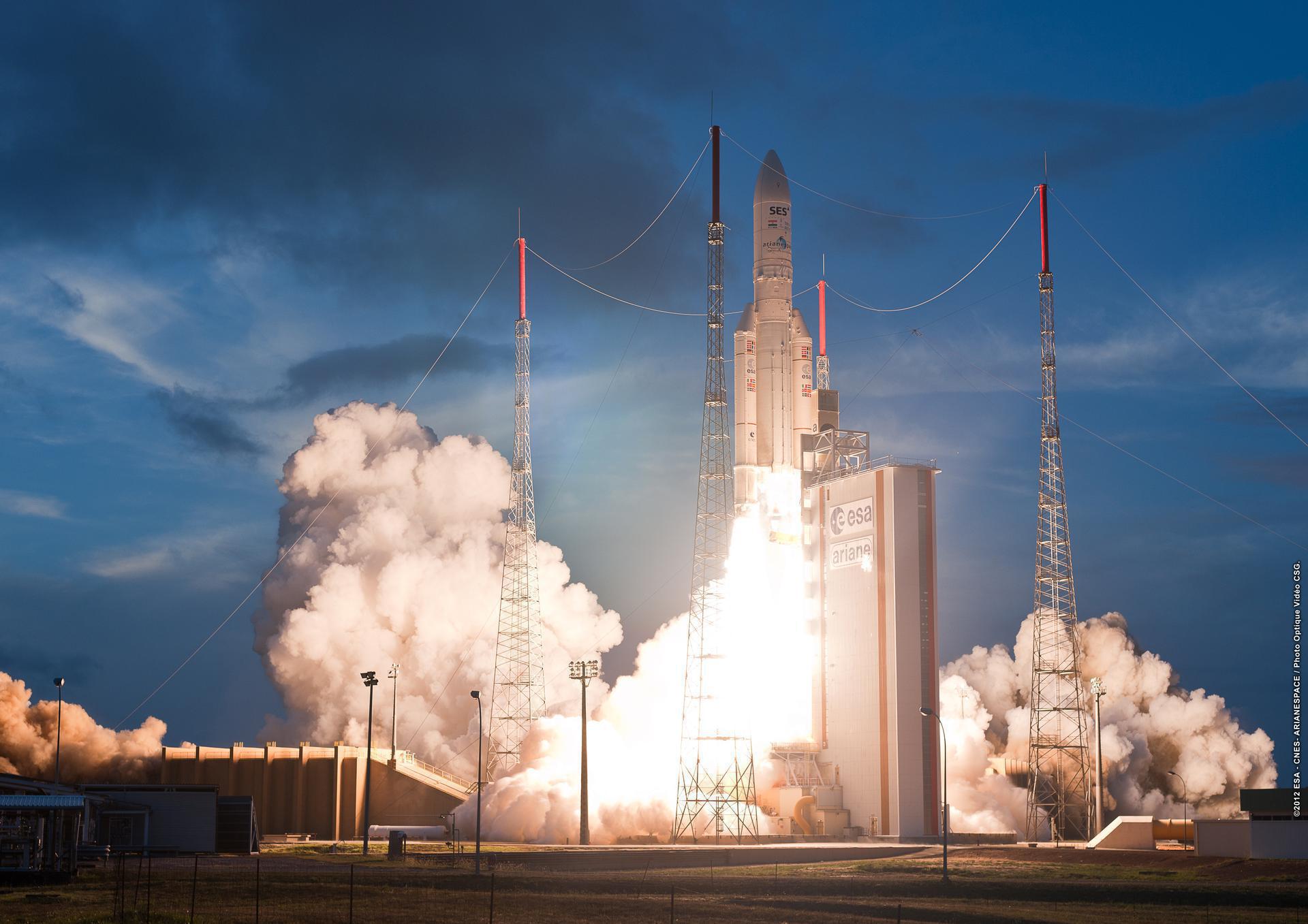Previous Spaceflight Launches
Filter by Agency, Locations or Vehicles
Show All LaunchesAriane 62 | Galileo L14 (FOC FM33 & FM34)
ArianeGroup | FranceGuiana Space Centre, French Guiana
Dec. 17, 2025, 5:01 a.m.
Ariane 62 | Sentinel-1D
ArianeGroup | FranceGuiana Space Centre, French Guiana
Nov. 4, 2025, 9:02 p.m.
Ariane 62 | Metop-SG A1
ArianeGroup | FranceGuiana Space Centre, French Guiana
Aug. 13, 2025, 12:37 a.m.
Ariane 62 | CSO-3
ArianeGroup | FranceGuiana Space Centre, French Guiana
March 6, 2025, 4:24 p.m.
Ariane 62 | Maiden Flight
ArianeGroup | FranceGuiana Space Centre, French Guiana
July 9, 2024, 7 p.m.
Ariane 5 ECA+ | Syracuse 4B & Heinrich Hertz (H2Sat)
ArianeGroup | FranceGuiana Space Centre, French Guiana
July 5, 2023, 10 p.m.
Status: Launch Successful
Mission:
Syracuse 4B is a French military communications satellite built by Thales Alenia Space. Heinrich Hertz (H2Sat) is a small geostationary communications satellite built by OHB System and the German Aerospace Center (DLR) to explore and test new broadband communications technologies.
Geostationary Transfer OrbitAriane 5 ECA+ | JUICE (JUpiter ICy moons Explorer)
ArianeGroup | FranceGuiana Space Centre, French Guiana
April 14, 2023, 12:14 p.m.
Ariane 5 ECA+ | Galaxy 35 & 36, MTG-I1
ArianeGroup | FranceGuiana Space Centre, French Guiana
Dec. 13, 2022, 8:30 p.m.
Ariane 5 ECA+ | Eutelsat Konnect VHTS
ArianeGroup | FranceGuiana Space Centre, French Guiana
Sept. 7, 2022, 9:45 p.m.
Ariane 5 ECA+ | Measat-3d & GSAT 24
ArianeGroup | FranceGuiana Space Centre, French Guiana
June 22, 2022, 9:50 p.m.





